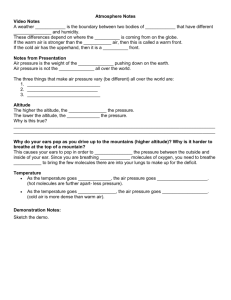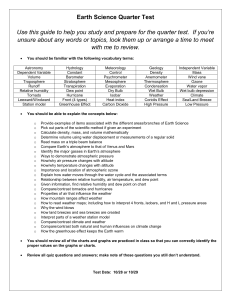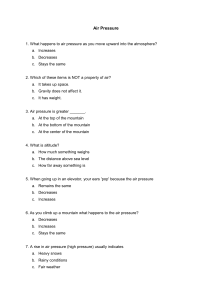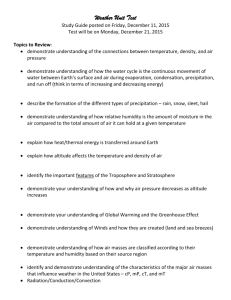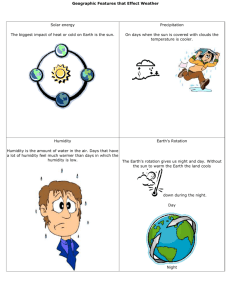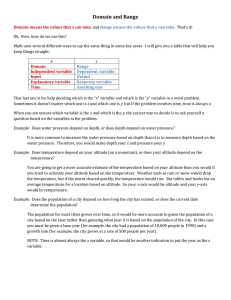Air Pressure and Isobars
advertisement
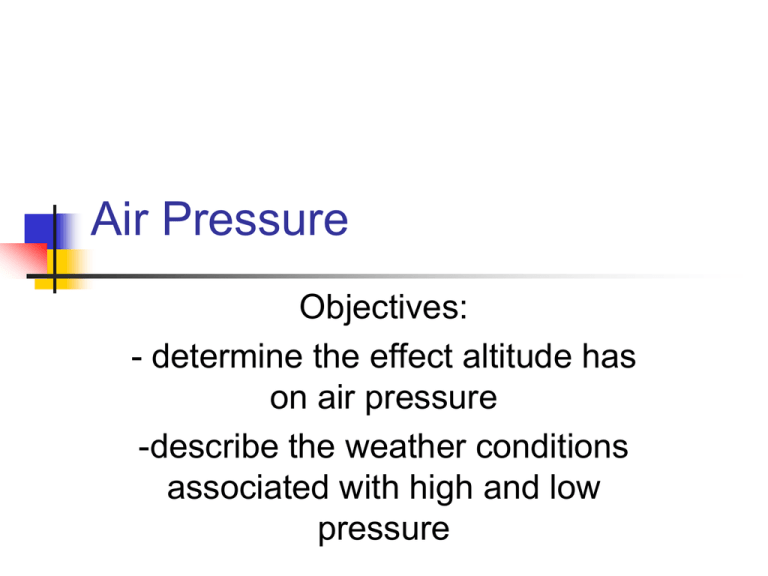
Air Pressure Objectives: - determine the effect altitude has on air pressure -describe the weather conditions associated with high and low pressure Who has heard of the expression “light as air”? What is air pressure? The weight of the atmosphere as it pushes down on the Earth’s surface Air pressure decreases as altitude increases. Ex: airplane Air pressure is most noticeable when you are rapidly ascending (going up) or when you are rapidly descending Air pressure decreases as altitude increases Air Pressure in Weather Changes in elevation are not the only changes in air pressure In general, air pressure decreases as temperature increases As air gets warmer, the molecules move faster and get farther apart and there are less molecules than in an equal volume of cold air Air Pressure in Weather Changes in humidity also cause changes in air pressure The more water there is in the air (Humidity), the lighter the air is, which causes lower air pressure Air Pressure in Weather Air pressure changes give us a simple way of forecasting weather A decrease in air pressure means warmer more humid air is coming, along with rain or snow An increase in air pressure means cooler air, drier, and more fair weather is coming Analyzing Changes in Air Pressure Meteorologists analyze pressure changes using isobars on weather maps An isobar is a line that joins points that have the same air pressure The area defined by an isobar is called a high pressure area (high) or a low pressure area (low) Air Pressure Wind always moves from high pressure to low pressure. (think bicycle tire with a hole-wind moves from inside (high), out (low) Coriolis Effect Because of the earth’s ROTATION, wind traveling from the north/south pole gets DEFLECTED (put off course).
